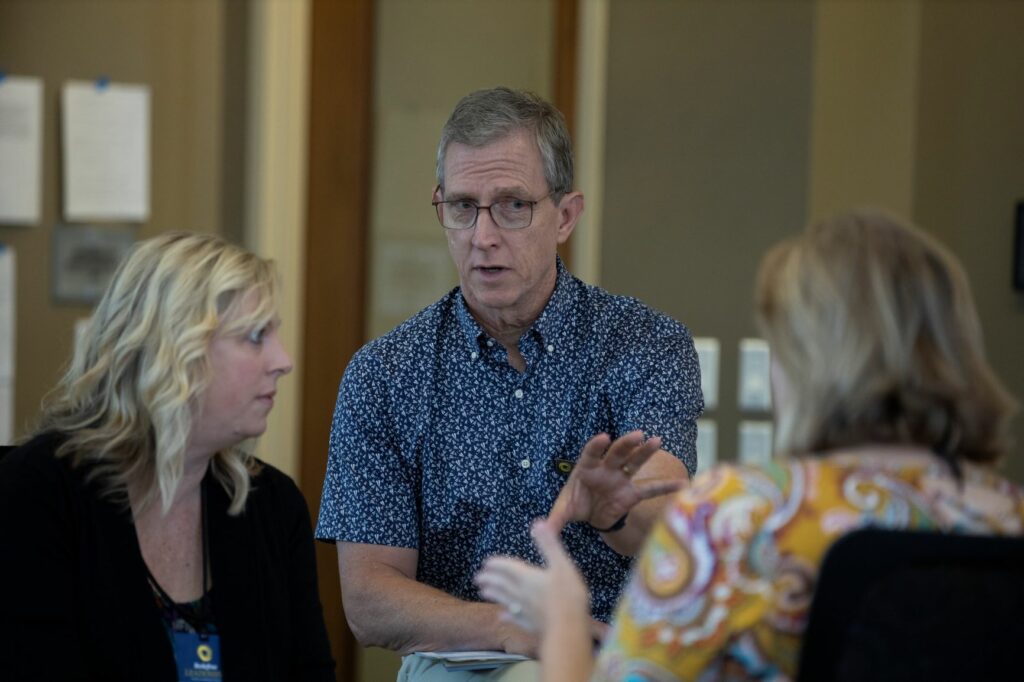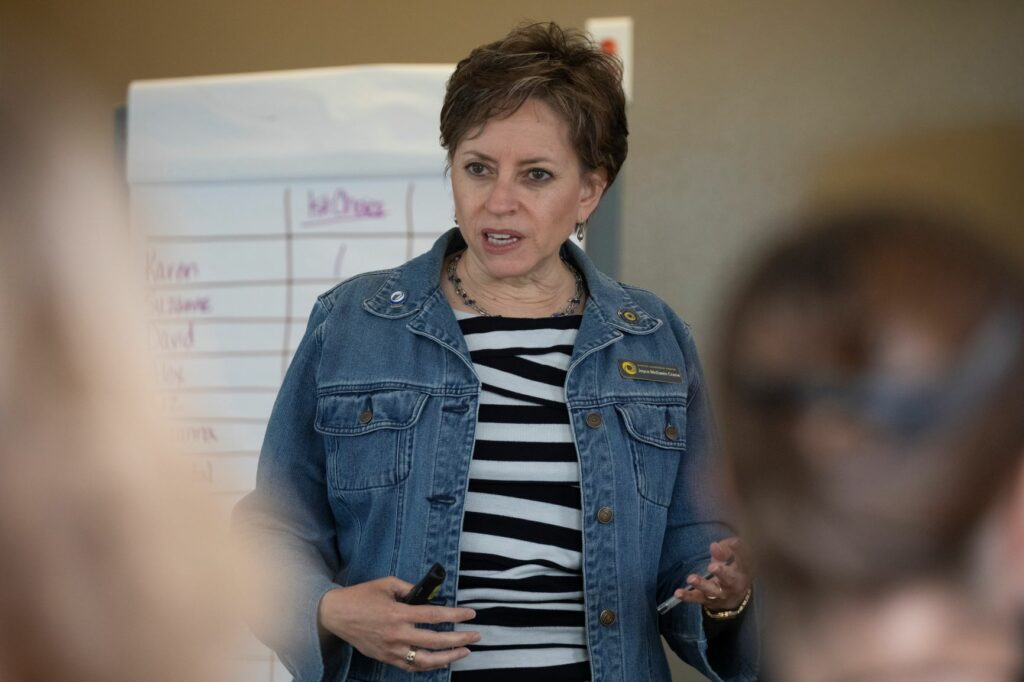Executive coaching instills the foundation
for building a culture of leadership
Coaching executives and supervisors to develop their capacity to lead is a common practice. At the Kansas Leadership Center, we have been experimenting with ways to leverage executives to build a culture of leadership in organizations and companies. In other words, we are working to develop the capacity in organizations to exercise leadership up and down the organizational chart so that progress can be made on the biggest challenges. Coaching executives to help instill that leadership culture is one strategy we are using to drive organizational change. While participants of our coaching programs overwhelmingly indicate that their experience has been helpful to their development, we were curious to learn more about the impact of executive coaching on building a culture of leadership.
 Researchers from Kansas State University and Fort Hays State University conducted a research study about the impact of the KLC executive coaching program. They were interested in these questions: 1) How do senior authorities describe the effects of a leadership coaching program on their efforts to create a culture of leadership in their organization? 2) How do leadership coaches describe the learning and application of the senior authorities they coach?Senior authorities from Leadership Transformation Grant partner organizations and Community Leadership Program partners took part in the study. These are partners that enroll multiple people in their organization in KLC leadership trainings. Executives in these organizations were provided hour long, one-on-one coaching sessions once a month for a year. The coaching focused on developing leadership capacity and instilling an organizational culture that exhibits the principle that “leadership is an activity, available to anyone, anytime, anywhere.” Seven executives and four coaches took part in the study that involved in depth interviews and survey responses.
Researchers from Kansas State University and Fort Hays State University conducted a research study about the impact of the KLC executive coaching program. They were interested in these questions: 1) How do senior authorities describe the effects of a leadership coaching program on their efforts to create a culture of leadership in their organization? 2) How do leadership coaches describe the learning and application of the senior authorities they coach?Senior authorities from Leadership Transformation Grant partner organizations and Community Leadership Program partners took part in the study. These are partners that enroll multiple people in their organization in KLC leadership trainings. Executives in these organizations were provided hour long, one-on-one coaching sessions once a month for a year. The coaching focused on developing leadership capacity and instilling an organizational culture that exhibits the principle that “leadership is an activity, available to anyone, anytime, anywhere.” Seven executives and four coaches took part in the study that involved in depth interviews and survey responses.
The researchers discovered that executive coaching during this one-year effort was effective at instilling the foundation for building a culture of leadership. In other words, executive coaching delivered on the short-term goals for building a culture of leadership. Executives reported that they understand their roles and capacities for developing a culture of leadership in their organization. Examples of this include: getting used to discomfort, navigating around resistant voices, holding more to purpose, slowing down to lead groups through diagnostic exercises, and allowing curiosity to adjust experiments.
Our work is incomplete
 What the study also revealed was the medium-term goals were a work in progress while long-term progress had not been realized or could not be determined at this time. Some senior authorities were actively applying leadership skills to shift the culture of leadership and members in the organization were beginning to exercise leadership with regularity. Yet, others reported difficulty and resistance with diffusing the leadership ideas throughout their organization. Some members reported that it was hard, at this time, to tell if a culture of leadership was developing. In terms of the ultimate aim of the leadership program – a strong culture of leadership is established where anybody in the organization can exercise leadership – participants in this study did not report that level of change.
What the study also revealed was the medium-term goals were a work in progress while long-term progress had not been realized or could not be determined at this time. Some senior authorities were actively applying leadership skills to shift the culture of leadership and members in the organization were beginning to exercise leadership with regularity. Yet, others reported difficulty and resistance with diffusing the leadership ideas throughout their organization. Some members reported that it was hard, at this time, to tell if a culture of leadership was developing. In terms of the ultimate aim of the leadership program – a strong culture of leadership is established where anybody in the organization can exercise leadership – participants in this study did not report that level of change.
From these findings, we learned:
- Executive coaching delivers value in helping executives become comfortable and proficient in exercising leadership in their company/organization.
- Moving executives from focusing on the micro-level issues to becoming proficient in inspiring a collective purpose is a primary objective when coaching executives.
- Coaching of key authority figures and training organizational members in leadership development may not be enough to realize a culture of leadership. Additional interventions of support and structure need to be explored.
- Developing ways to notice and measure what a culture of leadership looks like in organizations needs further attention and study.
Tim Steffensmeier is professor at Kansas State University’s Staley School of Leadership Studies. He is also a KLC teacher and director of KLC’s Third Floor Research, a partnership with the Staley School.
Research Study: Leadership Coaching and Culture Change
Authors: Lori E. Kniffin (Fort Hays State University), Colton White (Kansas State University), Jaclyn Tweeten (Kansas State University), and Andrew Wefald (Kansas State University)



